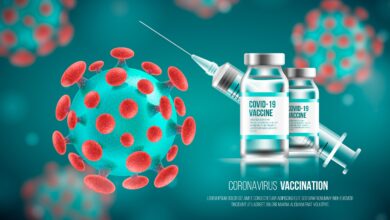WellHealthOrganic Surgery for Wrist and Ankle Injuries: A Complete Guide

Introduction
Wrist and ankle injuries are common, affecting athletes, workers, and even everyday individuals. If left untreated, these injuries can lead to chronic pain and mobility issues. WellHealthOrganic Surgery for Wrist and Ankle Injuries is a specialized approach that focuses on natural healing, minimally invasive procedures, and advanced surgical techniques. This guide will help you understand the benefits, methods, and recovery process of such surgeries.
Understanding Wrist and Ankle Injuries
Common Causes:
- Sports Injuries – Sprains, fractures, and ligament tears are common among athletes.
- Accidental Falls – Slipping or falling can result in severe damage.
- Repetitive Stress – Continuous strain from activities like typing or running can lead to injuries.
- Osteoarthritis – Age-related degeneration can weaken joints.
- Trauma or Impact – Direct blows or accidents can cause fractures and ligament injuries.
WellHealthOrganic Surgery: What Makes It Unique?
Key Features:
- Minimally Invasive Procedures – Reduces scars, pain, and recovery time.
- Advanced Organic Healing Techniques – Uses biocompatible materials for faster healing.
- Patient-Centric Approach – Personalized treatment plans based on the severity of the injury.
- Eco-Friendly Practices – Use of organic, sustainable medical practices.
Types of WellHealthOrganic Surgery for Wrist and Ankle Injuries
| Surgery Type | Description | Recovery Time |
|---|---|---|
| Arthroscopic Surgery | Minimally invasive procedure using a tiny camera to repair joints. | 4-6 weeks |
| Ligament Reconstruction | Repairs torn ligaments using grafts from the patient or donors. | 6-12 weeks |
| Fracture Fixation | Uses screws, plates, or rods to stabilize broken bones. | 8-12 weeks |
| Tendon Repair | Reconnects torn tendons to restore movement. | 6-10 weeks |
| Cartilage Restoration | Regenerates damaged cartilage using biological methods. | 10-14 weeks |
Pre-Surgery Preparation
- Medical Evaluation: A thorough diagnosis using X-rays, MRIs, and physical exams.
- Dietary Guidelines: Maintaining proper nutrition for optimal healing.
- Physical Therapy: Strengthening muscles before surgery.
- Mental Preparation: Understanding the procedure and recovery expectations.
The Surgical Procedure
Step-by-Step Process:
- Anesthesia Administration – Local or general anesthesia ensures a pain-free procedure.
- Incision & Access – Small incisions are made to reach the injured area.
- Repair Process – Surgeons use advanced tools to fix fractures, torn ligaments, or tendons.
- Closure & Dressing – Stitches or medical glue close the incisions.
- Recovery Room Monitoring – Patients are observed for a few hours before discharge or hospitalization.
Post-Surgery Recovery and Care
Important Steps for Healing:
- Pain Management: Use of prescribed medications and natural remedies.
- Physical Therapy: Customized exercises to regain strength and mobility.
- Diet & Nutrition: Consuming calcium and protein-rich foods for bone and tissue repair.
- Lifestyle Adjustments: Avoiding strenuous activities during recovery.

Benefits of WellHealthOrganic Surgery
- Faster Healing: Organic materials and regenerative techniques promote quicker recovery.
- Reduced Risk of Complications: Minimally invasive methods lower infection rates.
- Enhanced Mobility: Restores joint function efficiently.
- Eco-Friendly Approach: Sustainable surgical practices for better health outcomes.
Potential Risks and Complications
Although WellHealthOrganic Surgery is safe, some risks include:
- Infection – Rare but possible with any surgical procedure.
- Blood Clots – Can be prevented with proper movement and hydration.
- Nerve Damage – Rare but can occur in complex surgeries.
- Scar Tissue Formation – Can limit movement but is manageable with therapy.
Frequently Asked Questions (FAQs)
1. Is WellHealthOrganic Surgery better than traditional surgery?
Yes, it focuses on minimally invasive techniques, leading to quicker recovery and less pain.
2. How long does it take to fully recover?
Recovery varies by procedure but typically takes between 4-12 weeks.
3. What foods help in post-surgery recovery?
Protein-rich foods, leafy greens, dairy, and vitamin C sources aid in healing.
4. Can I walk immediately after ankle surgery?
You may need crutches or a walking aid for a few weeks before bearing full weight.
5. Will I need physical therapy?
Yes, therapy is crucial for regaining strength and mobility.
Conclusion
WellHealthOrganic Surgery for Wrist and Ankle Injuries offers a modern, natural approach to healing. With minimal invasion, enhanced recovery techniques, and eco-friendly practices, it provides a superior alternative to conventional surgeries. If you suffer from chronic wrist or ankle pain, consult a specialist to explore this innovative option.
By following the right pre- and post-surgical care, you can ensure a smooth and effective recovery, leading to a pain-free and active lifestyle.





